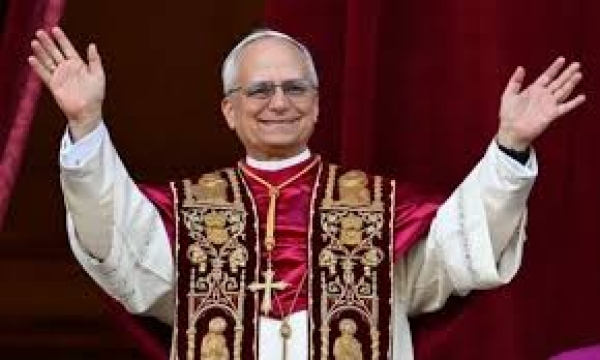“Habemus Papam!” — We have a pope. With those timeless Latin words, senior Cardinal Dominique Mamberti stepped onto the balcony of St. Peter’s Basilica, greeting the sea of faithful who had filled the square below despite the blazing Roman sun.
But it was not the swift conclusion of the conclave that etched this moment into history — it was the identity of the man chosen to succeed Pope Francis: Cardinal Robert Prevost, the first American pope in the nearly 2,000-year history of the Catholic Church.
Prevost was not widely considered a frontrunner for the papacy before the 2025 conclave, especially compared to other prominent candidates like Italy’s Pietro Parolin, the Philippines’ Luis Tagle, or Congo’s Fridolin Besungu, who were seen as leading contenders and featured heavily on betting platforms and Vatican analyst discussions.
Historically, cardinals have preferred older European successors to the papacy, mostly owing to their conservative nature.
So, who is Prevost, and how did the “dark horse” candidate quietly rise to become leader of the world’s 1.4 billion Catholics?
THE “LATIN” AMERICAN PRIEST’S BACKGROUND
Prevost will be the 267th occupant of the throne of St Peter and the first from the United States.
However, the 69-year-old is often described as a Latin American because of the many years he spent as a missionary in Peru before becoming an archbishop there.
Born in Chicago in 1955 to parents of Ecuadorian and French descent, Prevost served as an altar boy and was ordained as a priest in 1982.
After his ordination as a priest in 1982, Prevost joined the Augustinian mission in Peru in 1985 and served as chancellor of the Territorial Prélature of Chulucanas from 1985 to 1986.
He was in the United States as pastor for vocations and director of missions for the Augustinian Province of Chicago between 1987 and 1988.
He returned to Peru, where he spent the next 10 years heading the Augustinian seminary in Trujillo and teaching canon law in the diocesan seminary and was also prefect of studies.
Prevost also served in other capacities there, including as a parish pastor, diocesan official, director of formation, seminary teacher, and judicial vicar.
In 1999, he returned to Chicago and was elected provincial prior of the “Mother of Good Counsel” province in the archdiocese. Two and a half years later, he was elected prior general of the Augustinians and served two terms until 2013.
In 2014, he returned to Peru when Pope Francis appointed him apostolic administrator of the diocese of Chiclayo. He was elevated to bishop the next year and went on to serve as vice-president and member of the permanent council of the Peruvian Bishops’ Conference from 2018 to 2023.
At that time, Prevost was said to have overseen the role Peru’s bishops played in ensuring institutional stability during the successive political crises that led to the overthrow of successive presidents in the South American country.
PREVOST, THE MATHEMATICIAN FLUENT IN SPANISH AND ITALIAN
In his first speech after his election as the new pope, Prevost addressed the crowd in English, Spanish, and Italian.
The American earned his first bachelor of science in mathematics from Villanova University in 1977. The following years would see him majoring in theological fields.
In 1982, he clinched a master of divinity from the Catholic Theological Union in Chicago. In 1984, he got a licentiate in canon law from the Pontifical University of Saint Thomas Aquinas (Angelicum) in Rome, and in 1987, he added a doctorate in canon law from the same university.
VATICAN LEADERSHIP AND VIEWS
Pope Francis appointed Prevost prefect of the Dicastery for Bishops in January 2023, a powerful position responsible for selecting bishops.
He held the position until Francis died on April 21. Francis was also the one who elevated Prevost to the rank of cardinal in September 2023.
Prevost is also a member of seven Vatican dicasteries as well as the Commission for the Governance of the Vatican City State, indicating how much Francis trusted the cardinal and valued his administrative abilities.
The American is known not for how much he speaks but for how deeply he listens.
On key topics, the new pope says little, but some of his positions are known.
For example, he once stated that “clericalising women” would not solve the Church’s problems and might even create new ones but was reportedly very close to Francis’ vision regarding the environment, outreach to the poor and migrants, and meeting people “where they are”.
He also supported Pope Francis’ change in pastoral practice to allow divorced and civilly remarried Catholics to receive Holy Communion but appeared less favourable to currying favour with the LGBTQ lobby than Francis.
Prevost has also found himself entangled in controversies regarding clergy sexual abuse cases, although he has been defended in both instances.
Although Prevost was not the accused in both cases, he came under fire for how he handled the cases which involved other priests accused of sexually abusing minors. However, Prevost’s supporters claimed that the cases were inaccurately and unfairly reported in the media.
Prevost has now taken the name Pope Leo XIV, in honour of Pope Leo XIII, who was elected pontiff in 1878.
Leo XIII was known for his intellectualism and outlined the rights of workers to a fair wage, safe working conditions, and the formation of trade unions.
[TheCable]


